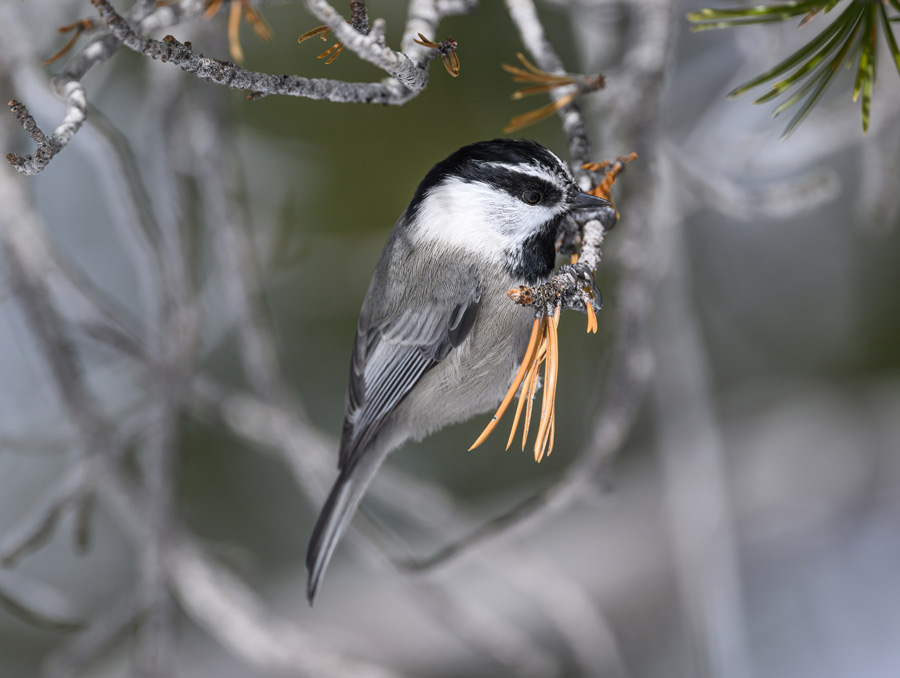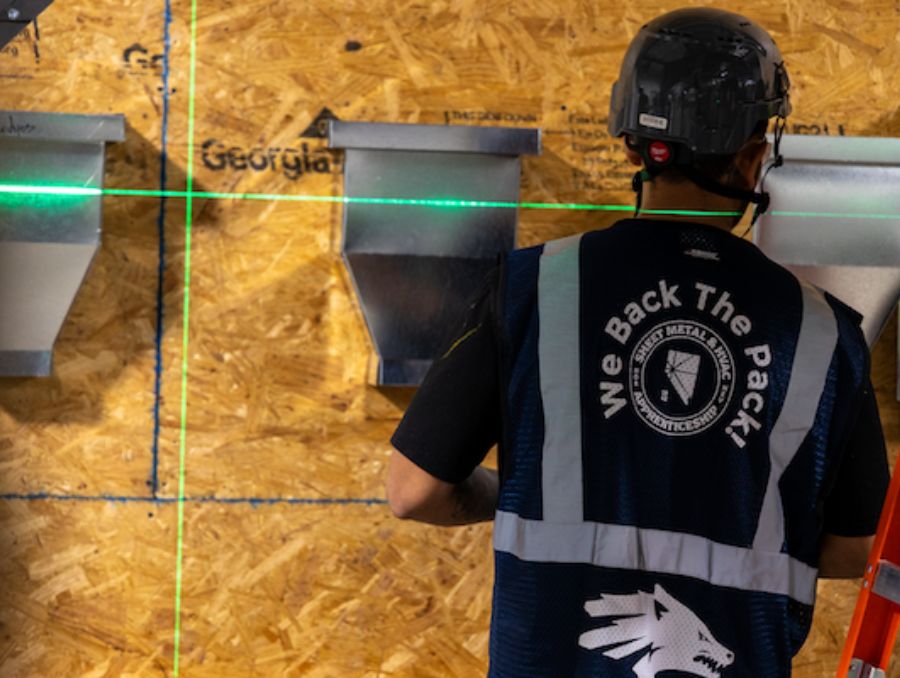Lost your keys? Misplaced your glasses? Can’t remember where you parked the car? You may wish you had the memory of a mountain chickadee.
In warmer months, these half-ounce birds, with brains slightly larger than a pea, stash tens of thousands of food items like seeds in tree bark, in lichens and crevices on the tree branches across the mountains. When winter arrives, they can recall the exact locations of their caches, a skill that helps them survive the bitter cold and deep snow.
In a new study published on April 17 in the journal Current Biology, researchers at the University of Nevada, Reno and CU Boulder identify nearly a hundred genes associated with the birds’ spatial memory, or ability to recall the locations of objects. The paper also suggests a potential trade-off may exist between having a solid long-term memory and being able to quickly ditch old memories to form new ones.
The findings could help biologists better understand the evolution of spatial memory in animals, including humans.
Vladimir Pravosudov is a professor of biology, and has studied the chickadees in the Sierra Nevada for 25 years.
“Using a field system of testing spatial learning in memory in wild birds we’ve been using for many years, we teamed up with collaborators to parse out which genes might influence how well a chickadee can learn and remember spatial locations,” Pravosudov said.
To evaluate the spatial memory of wild mountain chickadees, Pravosudov’s team designed a clever test. They hung multiple feeder arrays, each with eight bird feeders with seeds in the Sierra Nevada mountains. Each feeder has a gate with a radio frequency reader that can detect a tag researchers put on chickadees. The team then programmed each of the eight gates to only open to certain birds, so that the chickadees had to remember the location of the correct feeders that would open to them.
Pravosudov and his team then measured the birds’ spatial memory by counting how many times each chickadee landed on the wrong feeders before they recalled the right one - birds with better spatial memory have a lower error rate.
Using blood samples, the team at CU Boulder also sequenced the entire genomes of 162 tagged chickadees that have been tested for their spatial learning and memory ability using the smart feeder arrays, creating the largest dataset ever collected for evaluating the genetic basis of chickadee cognitive ability. By comparing the birds’ genomes with their performance on the feeder test, the team identified 97 genes associated with chickadees’ spatial learning and memory. Birds with specific genetic variants at these genes made fewer wrong attempts before landing on their designated feeders compared to those without them.
A large proportion of these genetic variants are associated with neuron formation in the hippocampus, a part of the brain that’s responsible for learning and memory, according to Sara Padula, a co-author on the paper and a Ph.D. student in the Department of Ecology and Evolutionary Biology at CU Boulder.
“Understanding the genetic basis of this trait will allow us to understand how the trait evolves,” Scott Taylor, the director of CU Boulder’s Mountain Research Station and associate professor in the Department of Ecology and Evolutionary Biology, said.
According to Taylor, the common ancestor of all North American chickadees cached food. But of the seven species of chickadees now found in North America, two do not cache food.
“They live in a milder environment where food is generally available year-round. Now that we know the gene regions that underlie spatial memory, we can look at what variation looks like in these species that have lost caching,” Taylor said.
“This study substantially advanced our understanding of the genetics of spatial memory in birds and behavioral genetics more broadly,” said Georgy Semenov, the paper’s co-author and a research associate in the Department of Ecology and Evolutionary Biology.
A trade-off
Chickadees that have exceptional spatial memory can live up to eight or nine years, which is a long time for a small bird, Taylor said. But having good long-term memory may come at a price.
After running the initial task for a few days, Pravosudov’s research team assigned new feeders to the birds to test how well birds can learn new locations after they have been consistently rewarded at a different feeder, a test usually used to assess cognitive flexibility.
Interestingly, chickadees from harsher higher elevations seemed to always perform worse on this ‘reversal’ test despite having better spatial learning and memory abilities compared to birds from lower and milder elevations. They seemed to have a harder time abandoning their initial memories and creating new ones.
“In a more variable environment, what our collaborators found suggests that chickadees with good long-term memory may have a disadvantage,” Padula said.
A shifting climate
Like many other habitats, mountains experience rapid changes in climate characterized by more rapid shifts between extreme drought and extreme snowfall and it is not clear how birds can adapt to such changes and how such changes may affect memory ability.
“Because of climate change, we might expect these selective pressures that have been shaping chickadee’s special memory for thousands of years to shift significantly. Understanding the genetic basis of the trait will allow us to track changes in their genomes over time,” Taylor said.
“Tracking genetic changes associated with spatial cognition will allow us to better understand the evolutionary process associated with climate change,” Pravosudov said.
Pravosudov will continue to work with Taylor’s group at CU Boulder. The team has already set up the same experiment in the Rocky Mountains, where another population of mountain chickadees resides that has been evolving independently from the chickadees in the Sierra Nevada for the last million years.
The researchers will also look specifically at genes associated with spatial memory and learning to understand how frequencies of certain versions of a gene, or alleles, related to cognitive abilities change over the years with differing climates.
“We can test if selection for certain alleles is stronger in snow years and weaker in drought years, and also see changes throughout many years,” Pravosudov said.
Using these methods, the researchers will be able to study climate-related evolutionary processes by focusing specifically on cognition and genes underlying cognition.
“We have a beautiful model we can use to study evolution of cognition in our mountainous backyards,” Pravosudov said.














